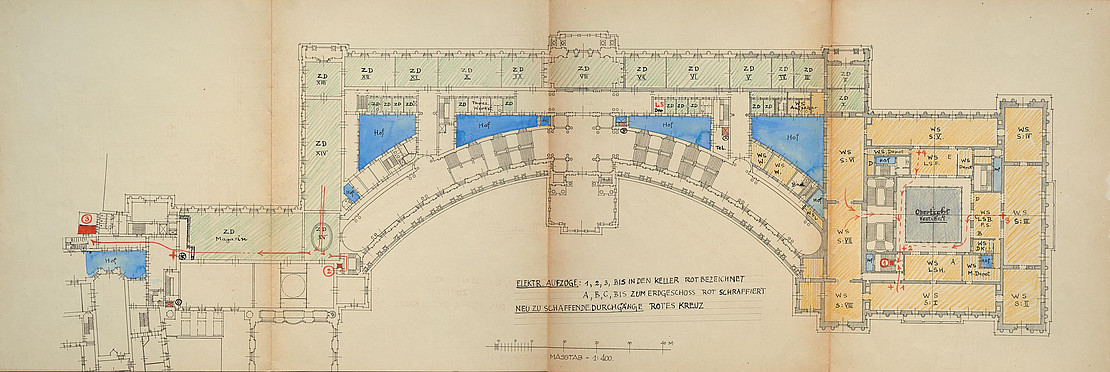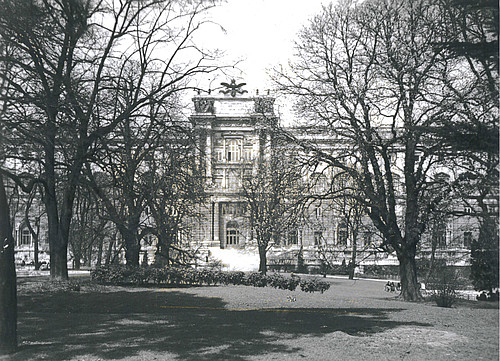The Central Depot
The Central Depot for Seized Collections was established in autumn 1938 on the first floor of the Neue Burg in Vienna, especially in the rooms facing the Burggarten. It was a depository for objects from Viennese collections confiscated from Jews by the Nazi regime from mid-March 1938 onwards for subsequent dispersal in various museums. They included artworks belonging to the collectors Emmy Aldor, Bernhard Altmann, Alois Bauer, Leo Fürst, David Goldmann, Rudolf Gutmann, Felix Haas, Felix Kornfeld, Moritz Kuffner, Wally Kulka, Otto Pick, N. Pilzer, Valentin Viktor Rosenfeld, Alphonse Rothschild, Louis Rothschild and Alfons Thorsch, as well as objects of unknown origin.
The Central Depot was initiated by Fritz Dworschak, director of the Kunsthistorisches Museum in Vienna, whose idea was to create a central collection point where the artworks, hitherto stored at different locations, could be united under one roof, his own. Together with the KHM employees Leopold Ruprecht and Karl Pollhammer, who were responsible for cataloguing the objects, and employees of other state museums (Heinrich Leporini, Ignaz Schlosser), Dworschak acted until July 1940 as manager of the depot. At his instigation, Julius Scherb and Paul Frankenstein photographed the most important seized objects until late summer 1939. At the start of the war, the first objects were transferred from the Central Depot, and from July 1940 it was managed by the Institute for Monument Protection, the present-day Federal Monuments Authority Austria, until the depot was gradually closed in 1941.


